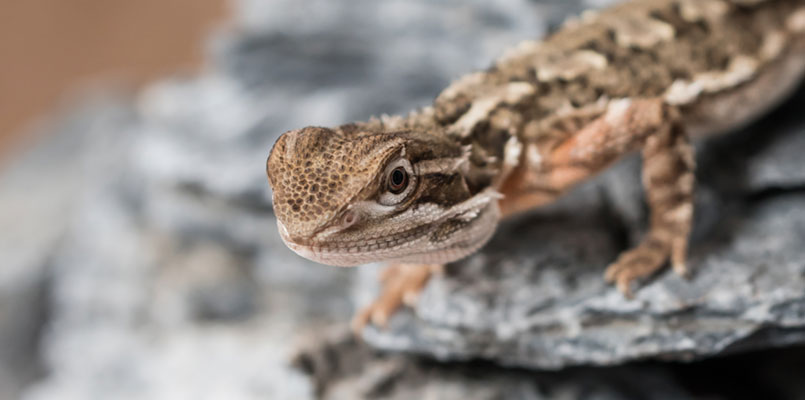
Pogona henrylawsoni
About
The Pogona henrylawsoni is an Australian agamid lizard species. The common names for Pogona henrylawsoni are Pygmy Bearded Dragon, Rankins Dragon, Lawson’s Dragon, Dumpy Dragon, Dwarf Bearded Dragon or Black Soil Bearded Dragon but most people in the reptile community call them Rankins Dragons. Pogona henrylawsoni is one of eight species contained in the Pogona genus. This species is popular among pet owners who may not have the space to accommodate the larger Pogona vitticeps.
This species is named in honor of the Australian author, poet, and philosopher Henry Lawson.
Description
Pogona henrylawsoni is similar in description to the Pogona vitticeps, but the maximum length of henrylawsoni is 30 cm compared to 60 cm of the Pogona vitticeps. Besides length, the only other differences are a shorter snout and they do not have the iconic beard of the Pogona vitticeps. The Pogona henrylawsoni has groups of relatively short scales/spikes in the back of the head, near the external ear openings, and running along both sides of the abdomen. Unlike the Pogona vitticeps or the Pogona Barbata, these spikes are not as prominent.
Unlike the vitticeps, henrylawsoni do not have different morphs. The reptile community has been trying to integrate different colors into the henrylawsoni genes. They have similar colors as the normal or standard morphs of vitticeps. Many people refer to the pattern on the back of the Pogona henrylawsoni as the “bowtie” pattern.
Geography
Pogona henrylawsoni is native to the hot and dry lands of Queensland Australia. The ground is compacted sand with clay with scrubland plants. They are found on rocks and fallen trees but can also be seen in burrows during the hottest time of the day. Pogona henrylawsoni is also found in captivity worldwide.
Behavior
Pogona henrylawsoni have similar personality to the Pogona vitticeps. Due to the smaller size of the henrylawsoni, they are more manageable and need less space and resources. Arm waving is another common signal for the henrylawsoni. The dragon will wave one of its front arms in a circular motion. This often signals a sign of submission, whether that be to a bigger dragon or a female to a male who is attempting to mate with her. A male will signal he wants to mate by head bobbing. Like the vitticeps, henrylawsoni will assert dominance by aggressively moving their head in an up and down motion.
Diet
The diet of the Pogona henrylawsoni consists of plant matter and insects meaning they are omnivores.
Lifespan
The lifespan of the henrylawsoni can range from 6 to 8 years.
References
Cogger HG. 2000. Reptiles and Amphibians of Australia, Sixth Edition. Sanibel Island, Florida
